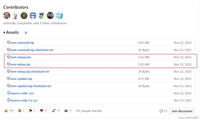在 node.js 中实现 http/2 推送信息
1. 安装依赖
首先,确保你的 node.js 版本支持 http/2。可以使用以下命令安装 http2 模块:
npm install http2
2. 创建 https 服务器
由于 http/2 在大多数浏览器中需要 https 支持,因此需要配置一个 https 服务器。以下是一个简单的示例:
const http2 = require('http2');
const fs = require('fs');
// 读取 ssl 证书
const serveroptions = {
key: fs.readfilesync('path/to/your/private-key.pem'),
cert: fs.readfilesync('path/to/your/certificate.pem')
};
// 创建 http/2 服务器
const server = http2.createsecureserver(serveroptions);
// 监听请求
server.on('stream', (stream, headers) => {
stream.respond({
':status': 200,
'content-type': 'text/html'
});
// 发送响应数据
stream.end('<h1>hello, http/2!</h1>');
});
// 启动服务器
server.listen(3000, () => {
console.log('http/2 server is running on https://localhost:3000');
});
3. 实现服务器推送
在 http/2 中,服务器推送可以通过 stream.pushstream() 方法实现。以下是如何在响应中推送额外资源的示例:
server.on('stream', (stream, headers) => {
stream.respond({
':status': 200,
'content-type': 'text/html'
});
// 推送额外的 css 文件
const push = stream.pushstream({ ':path': '/styles.css' }, (err) => {
if (err) console.error(err);
else {
push.respond({
':status': 200,
'content-type': 'text/css'
});
push.end('body { background-color: lightblue; }');
}
});
// 发送响应数据
stream.end('<h1>hello, http/2!</h1>');
});
4. 配置推送策略
在实际应用中,我们需要根据客户端请求的内容智能地决定何时推送资源。可以根据请求的 url、请求的类型等条件来进行推送:
server.on('stream', (stream, headers) => {
const path = headers[':path'];
if (path === '/') {
stream.respond({
':status': 200,
'content-type': 'text/html'
});
// 条件推送 css 文件
const push = stream.pushstream({ ':path': '/styles.css' }, (err) => {
if (err) console.error(err);
else {
push.respond({
':status': 200,
'content-type': 'text/css'
});
push.end('body { background-color: lightblue; }');
}
});
// 发送响应数据
stream.end('<h1>hello, http/2!</h1>');
}
});
5. 客户端请求
要测试 http/2 服务器推送,可以使用现代浏览器的开发者工具,或者使用 curl 命令。以下是使用 curl 的示例:
curl -k -i https://localhost:3000/
6. 注意事项
- 推送限制:并非所有浏览器都支持 http/2 推送,应该根据用户的浏览器特性进行适当处理。
- 推送的资源:应谨慎选择推送的资源,以避免不必要的数据传输。通常,推送的资源应该是页面加载时必需的。
- 网络延迟:在高延迟的网络环境中,推送可能会导致性能下降,需进行实际测试。
总结
通过以上步骤,我们可以在 node.js 中实现 http/2 的推送功能。利用服务器推送,我们可以优化资源加载,提高用户体验。在实际应用中,需根据具体需求和用户环境进行配置和调整。
到此这篇关于详解如何在node.js中实现http/2推送信息的文章就介绍到这了,更多相关node.js http/2推送信息内容请搜索代码网以前的文章或继续浏览下面的相关文章希望大家以后多多支持代码网!






发表评论